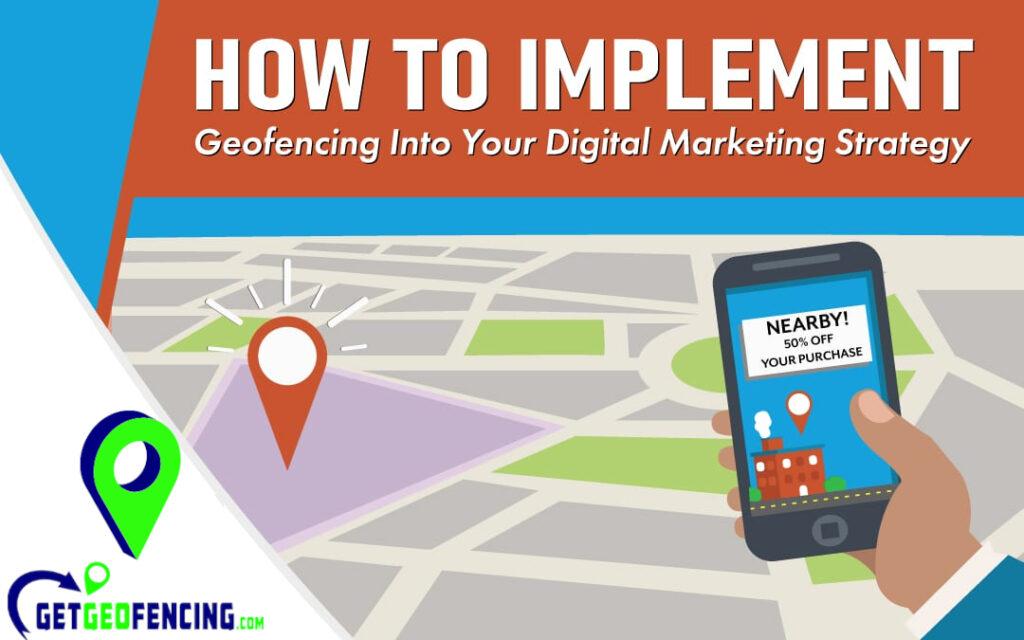
Unlocking the Power of Programmatic Display Advertising with Getgeofencing
In the dynamic world of digital marketing, staying ahead of the curve requires leveraging cutting-edge technologies and strategies. One such innovation that has revolutionized the advertising landscape is programmatic display advertising. At the forefront of this revolution is Getgeofencing, a leading provider known for its sophisticated solutions and unparalleled expertise in programmatic advertising. In this comprehensive blog post, we will delve into the intricacies of programmatic display advertising, explore its numerous benefits, and highlight why Getgeofencing stands out as the best provider in the market.
Understanding Programmatic Display Advertising
Programmatic display advertising involves the automated buying and selling of online ad space using advanced algorithms and data analytics. This process replaces traditional methods of ad placement, which often involved manual negotiations and predefined rates. By leveraging real-time bidding (RTB) and artificial intelligence (AI), programmatic advertising ensures that ads are delivered to the right audience at the right time, optimizing campaign performance and maximizing return on investment (ROI).
The Mechanics of Programmatic Display Advertising
At its core, programmatic advertising operates through a complex ecosystem involving several key components:
- Demand-Side Platforms (DSPs): These platforms enable advertisers to purchase ad space across various websites and apps in real-time. DSPs use sophisticated algorithms to analyze user data and bid on impressions that align with the advertiser’s target audience.
- Supply-Side Platforms (SSPs): These platforms assist publishers in managing and selling their ad inventory. SSPs work with multiple DSPs to ensure that ad spaces are sold at the highest possible price through RTB.
- Ad Exchanges: These digital marketplaces facilitate the buying and selling of ad inventory between DSPs and SSPs. Ad exchanges play a crucial role in ensuring transparency and efficiency in the programmatic advertising process.
- Data Management Platforms (DMPs): DMPs collect and analyze vast amounts of data from various sources, helping advertisers understand their audience better and make data-driven decisions.
- Ad Servers: These servers are responsible for delivering ads to users’ devices and tracking their performance. Ad servers ensure that ads are displayed correctly and monitor key metrics such as impressions, clicks, and conversions.
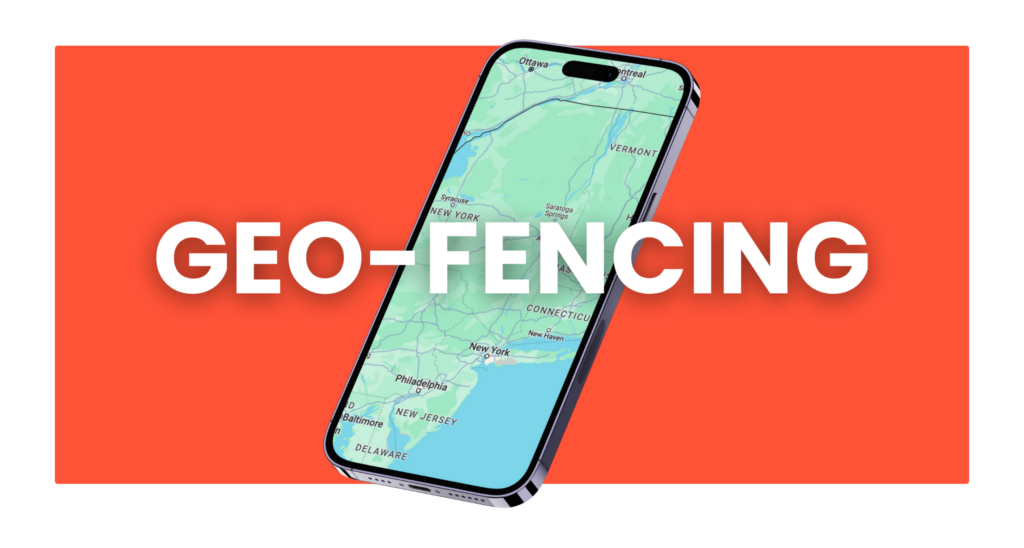
Types of Programmatic Advertising
Programmatic advertising encompasses several different types of ad placements, each with its unique advantages:
- Open Auctions: In an open auction, ad inventory is available to any advertiser willing to bid. This type of auction is highly competitive and ensures that the highest bidder wins the ad placement.
- Private Marketplaces (PMPs): PMPs are exclusive auctions where premium publishers invite select advertisers to bid on their inventory. This type of auction offers greater control over ad placements and ensures brand safety.
- Preferred Deals: In preferred deals, advertisers negotiate fixed prices for ad inventory with publishers before it goes to auction. This arrangement provides advertisers with guaranteed access to specific ad placements.
- Programmatic Direct: This method involves direct deals between advertisers and publishers, bypassing the auction process altogether. Programmatic direct offers high transparency and control over ad placements.
Benefits of Programmatic Display Advertising
Programmatic display advertising offers numerous advantages that make it an indispensable tool for modern marketers. Here are some of the key benefits:
- Enhanced Targeting Capabilities
One of the most significant advantages of programmatic advertising is its ability to deliver highly targeted ads to specific audiences. By leveraging data from DMPs, programmatic platforms can analyze user behavior, demographics, interests, and more to create detailed audience profiles. This level of precision ensures that ads are shown to users who are most likely to engage with them, improving campaign performance and ROI.
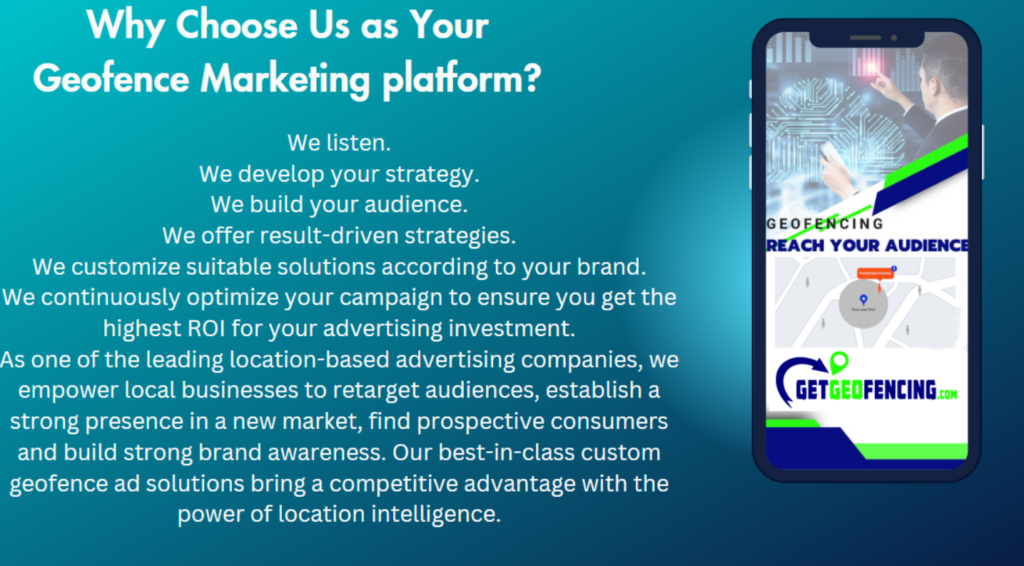
- Real-Time Optimization
Programmatic advertising allows for real-time optimization, enabling advertisers to adjust their campaigns on the fly based on performance data. This flexibility ensures that ads are continually optimized for maximum effectiveness, whether it’s adjusting bids, changing creatives, or reallocating budget to high-performing segments.
- Increased Efficiency and Cost Savings
The automation of the ad buying process reduces the need for manual intervention, streamlining operations and saving valuable time and resources. Additionally, the competitive nature of RTB ensures that ad placements are secured at the best possible prices, maximizing cost efficiency.
- Enhanced Transparency and Control
Programmatic advertising provides detailed insights into campaign performance, allowing advertisers to track key metrics and gain a comprehensive understanding of their ad spend. This transparency empowers advertisers to make informed decisions and maintain control over their campaigns.
- Scalability
Programmatic advertising offers unparalleled scalability, enabling advertisers to reach vast audiences across multiple channels and devices. Whether targeting local, regional, or global markets, programmatic platforms can accommodate diverse campaign requirements and objectives.
Why Getgeofencing is the Best Provider of Programmatic Display Advertising
With the myriad of providers available in the market, choosing the right partner for programmatic display advertising can be daunting. However, Getgeofencing has established itself as a leader in the industry, offering unmatched expertise, innovative solutions, and exceptional customer service. Here are several reasons why Getgeofencing stands out as the best provider of programmatic display advertising:
- Comprehensive Suite of Solutions
Getgeofencing offers a comprehensive suite of programmatic advertising solutions tailored to meet the unique needs of each client. From open auctions and private marketplaces to programmatic direct and preferred deals, Getgeofencing provides a wide range of options to ensure optimal campaign performance. Their advanced DSP technology enables precise targeting and real-time optimization, delivering exceptional results for advertisers.
- Advanced Targeting Capabilities
Getgeofencing leverages cutting-edge data analytics and AI-powered algorithms to deliver highly targeted ads to the right audience. By analyzing vast amounts of data from various sources, including location-based data, Getgeofencing creates detailed audience profiles that drive more relevant and engaging advertising experiences. This level of precision targeting significantly enhances campaign effectiveness and ROI.
- Superior Customer Support
Getgeofencing is renowned for its exceptional customer support, providing clients with dedicated account managers who offer personalized guidance and assistance throughout the campaign lifecycle. Their team of experts works closely with clients to understand their goals, develop tailored strategies, and optimize campaigns for maximum impact. This commitment to customer success sets Getgeofencing apart from other providers.
- Robust Data Security and Privacy Practices
In today’s digital landscape, data security and privacy are paramount concerns for advertisers. Getgeofencing adheres to the highest standards of data protection, ensuring that all client data is handled securely and transparently. Their robust privacy practices comply with regulations such as GDPR and CCPA, providing advertisers with peace of mind and safeguarding user trust.
- Proven Track Record of Success
Getgeofencing has a proven track record of delivering outstanding results for clients across various industries. Their portfolio of successful campaigns demonstrates their ability to drive measurable outcomes and exceed client expectations. By partnering with Getgeofencing, advertisers can leverage their expertise and experience to achieve their marketing objectives.
- Innovation and Adaptability
The digital marketing landscape is constantly evolving, and Getgeofencing remains at the forefront of innovation. They continuously invest in research and development to stay ahead of industry trends and incorporate the latest advancements into their solutions. This commitment to innovation ensures that clients benefit from cutting-edge technologies and stay competitive in a rapidly changing environment.

Case Studies: Success Stories with Getgeofencing
To illustrate the impact of Getgeofencing’s programmatic display advertising solutions, let’s explore a few case studies highlighting their success in driving results for clients.
Case Study 1: Retail Chain Boosts In-Store Sales
A national retail chain partnered with Getgeofencing to enhance their in-store sales through targeted programmatic advertising. By leveraging location-based data and advanced audience segmentation, Getgeofencing created personalized ads that were delivered to potential customers when they were near the store locations.
Results:
- Increased Foot Traffic: The campaign successfully drove a 25% increase in foot traffic to the retail stores.
- Higher Conversion Rates: The targeted ads resulted in a 30% increase in in-store purchases.
- Improved ROI: The efficient allocation of ad spend led to a 20% improvement in ROI.
Case Study 2: Automotive Brand Enhances Lead Generation
An automotive brand sought to boost lead generation for their new vehicle models. Getgeofencing implemented a programmatic advertising campaign that targeted potential buyers based on their online behavior and interests.
Results:
- Higher Lead Volume: The campaign generated a 40% increase in qualified leads.
- Lower Cost Per Lead: Efficient targeting and optimization reduced the cost per lead by 15%.
- Improved Engagement: The personalized ads achieved a 35% higher click-through rate (CTR) compared to previous campaigns.
Case Study 3: Hospitality Industry Increases Bookings
A luxury hotel chain aimed to increase bookings during the off-peak season. Getgeofencing utilized programmatic display advertising to target travelers and business professionals with tailored offers and promotions.
Results:
- Increased Bookings: The campaign resulted in a 50% increase in hotel bookings during the off-peak season.
- Enhanced Brand Awareness: The targeted ads improved brand visibility and recognition among potential customers.
- Higher Engagement: The engaging ads achieved a 30% increase in website visits and interactions.
How to Get Started with Getgeofencing
If you’re ready to unlock the full potential of programmatic display advertising, partnering with Getgeofencing is the first step towards achieving your marketing goals. Here’s how you can get started:
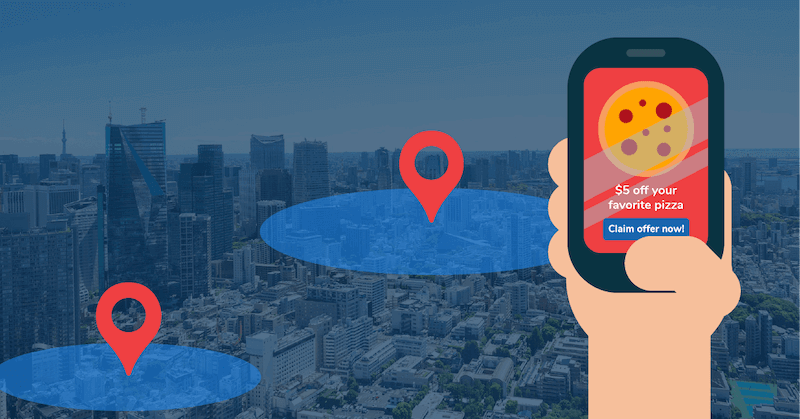
Maximizing Digital Impact: A Deep Dive into Programmatic Display Advertising
A comprehensive guide to programmatic display advertising, including an overview of the technology, its evolution, key components, benefits, how it works, real-time bidding, cost factors, successful campaigns, current trends, and future outlook.
Overview of Programmatic Display Advertising
Programmatic display advertising revolutionizes the digital marketing landscape by automating the buying and selling of online banner ads, allowing advertisers to reach specific audience segments with precision. This automated approach enhances the efficiency and effectiveness of advertising campaigns, ensuring that the right message is delivered to the right audience at the right time. For instance, companies like Geico Insurance have successfully utilized programmatic display to target potential customers with relevant ads, resulting in increased brand awareness and engagement. The ability to seamlessly integrate visuals, personalized content, and precise audience targeting in programmatic display advertising is a key factor in achieving successful outcomes in digital marketing efforts.
Furthermore, programmatic display advertising plays a crucial role in enhancing advertising campaign results through targeted audience reach and personalized content. By leveraging programmatic technology, advertisers can optimize their campaigns to resonate with specific audience segments, driving higher engagement and conversion rates. For example, Brilliant Earth, a jewelry company, effectively employed programmatic display to reach a broader audience and increase online sales by delivering personalized ads to potential customers based on their preferences and behaviors. This personalized approach underscores the value of programmatic display in creating meaningful connections with consumers and driving tangible results in advertising initiatives.
The importance of programmatic display advertising in the digital marketing landscape cannot be overstated, as it offers unparalleled efficiency and precision in reaching specific audience segments. By utilizing advanced technology and data-driven strategies, advertisers can optimize their campaigns to deliver tailored messages to the right audience at the right time, ultimately maximizing the impact of their advertising efforts. As online advertising continues to evolve, programmatic display remains a cornerstone in driving better results for advertisers through automation and targeted audience reach. Companies that embrace programmatic display advertising stand to benefit from its scalability, real-time flexibility, and precise targeting capabilities, setting the stage for continued success in the competitive digital advertising space.

Evolution of Display Advertising
The evolution of display advertising has witnessed a significant transformation with the rise of programmatic display, marking a shift towards automation and data-driven strategies. Unlike traditional display advertising methods, programmatic display leverages advanced technology to optimize ad placements and target specific audience segments more effectively. For example, companies like Geico Insurance have successfully utilized programmatic display campaigns to reach a larger audience with personalized content, resulting in increased brand awareness and engagement. The transition towards programmatic display reflects the industry’s recognition of the efficiency and precision offered by this innovative approach in reaching target audiences and driving improved campaign results.
Statistics reveal a substantial growth in programmatic display advertising, with online ad spending surpassing $92 billion in 2021. This exponential increase underscores the industry’s confidence in the effectiveness of programmatic technology in enhancing advertising outcomes and maximizing ROI. However, as programmatic advertising continues to evolve, concerns around user privacy have emerged over time. A longitudinal study conducted between 2013 and 2017 shed light on the delicate balance between advertising effectiveness and user data privacy, emphasizing the importance of transparency and trust in the online advertising ecosystem. As the digital advertising landscape continues to evolve, the integration of programmatic display advertising remains a pivotal strategy for advertisers looking to stay ahead of the curve and achieve meaningful results in their marketing campaigns.
Key Components of Programmatic Advertising Technology
Artificial intelligence (AI) plays a critical role in the automation of ad inventory sales and the enhancement of operational efficiency for publishers and advertisers. By harnessing AI algorithms, programmatic platforms can analyze vast amounts of data in real-time to make informed decisions on ad placements, targeting, and optimizations. This advanced technology not only streamlines the advertising process but also enables precise audience targeting and improved campaign performance overall. For example, Publift’s Fuse platform utilizes AI to optimize revenue for publishers through programmatic advertising, showcasing the transformative impact of AI in driving advertising success.
In addition to AI, the interplay between demand-side platforms (DSPs) and supply-side platforms (SSPs) forms the foundation of programmatic advertising technology. DSPs empower advertisers to manage their ad campaigns efficiently by providing tools for bidding, targeting, and performance tracking, while SSPs enable publishers to effectively manage and sell their ad inventory. In a real-time bidding scenario, DSPs strategically bid on behalf of advertisers to secure ad placements based on predefined strategies, budgets, and creative requirements, highlighting the intricate mechanisms at play in programmatic auctions. This seamless integration of DSPs and SSPs not only streamlines the ad buying process but also ensures that the right ad is delivered to the right audience at the right time, maximizing the impact of each advertising dollar spent.
Furthermore, the advantages offered by different auction types like header bidding and private marketplaces play a significant role in programmatic advertising. Header bidding allows publishers to offer their ad inventory to multiple ad exchanges simultaneously before making calls to their ad servers, increasing competition and revenue potential. On the other hand, private marketplaces provide a controlled environment for advertisers to access premium inventory, ensuring brand safety and exclusivity. By leveraging these auction types, advertisers and publishers can optimize their programmatic advertising strategies to achieve better results and maximize the value of their ad inventory. The dynamic nature of programmatic technology and its various components highlight the depth and complexity of this innovative approach to digital advertising.
Benefits of Programmatic Display Advertising
Programmatic display advertising offers a myriad of benefits for advertisers looking to optimize their digital marketing efforts and drive meaningful results. The efficiency, transparency, and real-time reporting capabilities of programmatic advertising provide advertisers with valuable insights into campaign performance, enabling them to make data-driven decisions and adjustments on the fly. This real-time visibility allows advertisers to monitor and optimize their campaigns in unprecedented ways, ensuring that their messaging resonates with the target audience effectively. For instance, companies like Amanda Foundation have leveraged programmatic display advertising to increase awareness about animal welfare initiatives and drive donations successfully.
Moreover, programmatic display advertising facilitates increased reach and improved return on investment (ROI) for advertisers by enabling them to target specific audience segments with personalized content. This targeted approach ensures that ads are delivered to the most relevant audiences, increasing the likelihood of engagement and conversion. Cost-effectiveness and large reach provided by display ads contribute to brand awareness and targeted benefits, allowing advertisers to maximize the impact of their advertising budgets. For example, Geico Insurance and Progressive Insurance have effectively utilized programmatic display campaigns to reach specific audience segments, increase brand visibility, and drive conversions, showcasing the tangible benefits of targeted advertising strategies. The efficiency, scalability, and cost-effectiveness of programmatic display advertising underscore its significance in the digital marketing landscape, offering advertisers a powerful tool to achieve their marketing objectives effectively.
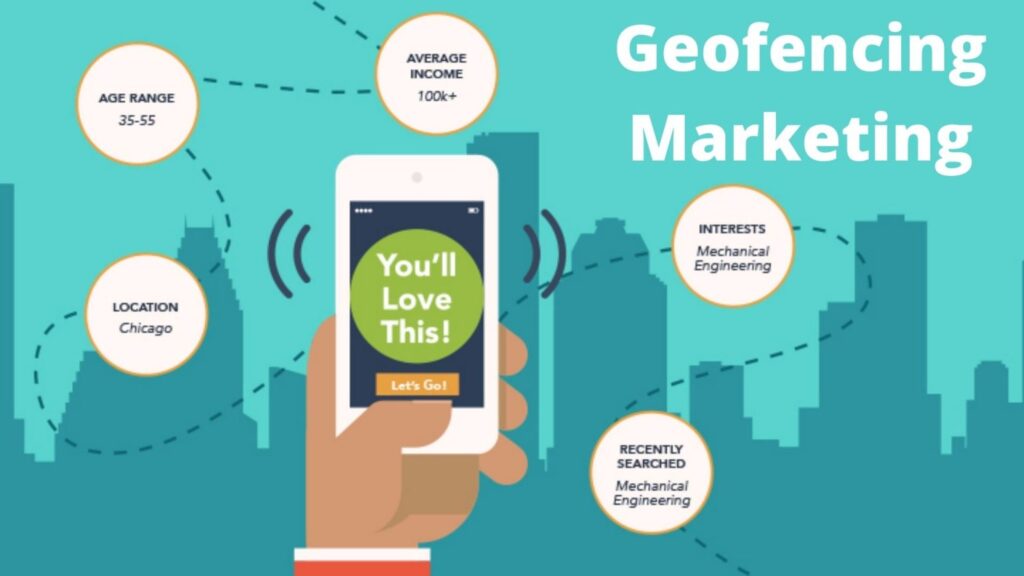
How Programmatic Display Works
Programmatic display advertising operates through automated processes that streamline the buying and selling of ad space, leveraging algorithmic tools to ensure precise ad placements tailored to specific user signals and behaviors. This advanced technology allows advertisers to reach their target audience segments more effectively by analyzing real-time data and adjusting ad campaigns accordingly. For instance, a clothing retailer using programmatic display can target users who have previously visited their website and viewed specific products, increasing the likelihood of conversion by showing relevant ads based on the user’s browsing history. This personalized approach to ad delivery enhances the user experience and drives higher engagement and conversion rates.
Furthermore, the differentiation between programmatic display and programmatic advertising is essential to understanding the comprehensive nature of this digital marketing strategy.
While programmatic display focuses on the format and placement of visual ads, programmatic advertising encompasses the entire automated process of ad buying and selling across various ad formats beyond display ads. This distinction highlights the versatility and complexity of programmatic technology, allowing advertisers to optimize their campaigns across multiple channels and formats to maximize reach and engagement. For example, a travel company using programmatic advertising can target potential customers with personalized offers based on their travel preferences and browsing history, creating a seamless and tailored advertising experience for users.
Real-Time Bidding in Programmatic Display
Real-time bidding is a fundamental process within programmatic display advertising, enabling advertisers to bid on ad impressions in real-time auctions, ensuring immediate placement based on the highest Cost Per Mille (CPM) bid. This dynamic bidding mechanism allows for efficient and precise ad placements, optimizing the chances of reaching the target audience effectively. For example, imagine a shoe company participating in a real-time bidding auction for ad space on a popular fashion website. Through real-time bidding, the shoe company can compete with other advertisers to secure ad placements that align with its target market, increasing the likelihood of engagement and conversions. The instantaneous nature of real-time bidding ensures that advertisers can reach their desired audience in a timely and efficient manner, maximizing the impact of their ad campaigns.
In the realm of programmatic display, demand-side platforms (DSPs) play a crucial role in the real-time bidding process, acting as the technology that automates and optimizes the purchasing of ad inventory on behalf of advertisers. DSPs utilize sophisticated algorithms and data analysis to make split-second decisions during auctions, considering factors like the advertiser’s campaign goals, available budget, and the relevance of the ad creative to the target audience.
This automation streamlines the bidding process and enhances the overall efficiency of programmatic display advertising campaigns. For instance, a travel agency leveraging a DSP can swiftly adjust bids based on real-time performance data, ensuring that their ads are displayed to users who are actively searching for vacation packages, thereby maximizing the return on ad spend and driving conversions. By leveraging DSPs and real-time bidding, advertisers can optimize their programmatic display campaigns to reach the right audience at the right time, maximizing the effectiveness of their advertising efforts.
Cost Factors in Programmatic Display Advertising
When considering the cost factors in programmatic display advertising, it is essential to understand the various elements that can influence the overall expenses of an advertising campaign. One significant factor is the target audience, as reaching specific segments might require different levels of investment depending on the demographics or behaviors being targeted. For example, a luxury fashion brand aiming to target affluent consumers might incur higher costs compared to a local grocery store targeting a broader audience based on geographic location and general interests. Understanding the nuances of target audience segmentation is crucial for advertisers looking to allocate their budgets effectively and optimize their campaign performance.
Moreover, the quality of ad inventory plays a pivotal role in determining the cost of programmatic advertising campaigns. Ad placements on premium websites with high traffic and engagement rates may come at a premium cost, but they can also deliver better visibility and engagement for the ads. On the other hand, lower-quality placements might be more cost-effective but could result in lower performance metrics. Striking the right balance between cost and quality is essential for advertisers to maximize the impact of their programmatic display advertising efforts and achieve their marketing objectives. By carefully evaluating the quality of ad inventory and its alignment with campaign goals, advertisers can make informed decisions that optimize the return on investment and drive meaningful results in their advertising initiatives.
Furthermore, bidding strategies can significantly impact the overall costs in programmatic display advertising campaigns. Advertisers can choose between various bidding tactics such as cost-per-thousand-impressions (CPM), cost-per-click (CPC), or cost-per-acquisition (CPA), each affecting the campaign’s cost structure differently. By strategically aligning bidding strategies with campaign objectives and target audience preferences, advertisers can control costs while maximizing the impact of their programmatic display advertising efforts.
For instance, a retail brand might opt for a CPC bidding strategy to drive website traffic and conversions, while a brand focusing on brand awareness might choose a CPM approach to maximize visibility and reach. The flexibility and customization offered by different bidding strategies enable advertisers to tailor their programmatic display campaigns to meet specific goals and budget requirements effectively.
Successful Programmatic Display Campaigns
Numerous companies have leveraged programmatic display advertising to run highly successful campaigns, driving tangible results and achieving their marketing objectives. For example, Amanda Foundation, a non-profit organization, utilized programmatic technology to increase awareness about animal welfare initiatives and drive donations effectively.
By targeting specific audience segments with personalized content, Amanda Foundation was able to engage donors and supporters, ultimately increasing contributions and support for their cause. Similarly, Geico Insurance and Progressive Insurance are notable examples of insurance companies that have effectively utilized programmatic display campaigns to target specific audience segments, increase brand visibility, and drive conversions. These success stories underscore the effectiveness of programmatic display advertising in reaching the right audience with the right message, driving engagement, and achieving marketing goals.
The effectiveness of programmatic display campaigns lies in their ability to ensure that advertising budgets are spent efficiently by reaching the intended audience with precision and scalability. By utilizing data-driven strategies and advanced targeting capabilities, companies can achieve a higher return on investment and maximize the impact of their advertising efforts. The success of programmatic advertising campaigns is further underscored by their ability to reach a wide audience, analyze real-time data to optimize performance, and achieve cost-effective brand awareness through targeted messaging.
These examples demonstrate how programmatic display advertising can be a powerful tool for companies looking to enhance their online presence and drive meaningful results in their marketing campaigns. The scalability, real-time adaptability, and precise targeting capabilities of programmatic display advertising make it a valuable asset for advertisers seeking to achieve their marketing objectives efficiently and effectively.

Trends in Programmatic Display Advertising
The landscape of programmatic display advertising is witnessing significant trends and innovations that are reshaping the digital advertising industry. One prominent trend is the increased focus on personalization, as advertisers strive to create tailored ad experiences that resonate with individual consumers. By leveraging data insights and advanced targeting capabilities, companies can deliver personalized content to specific audience segments, driving higher engagement and conversion rates. For example, companies like Hestan Culinary have successfully utilized personalized programmatic campaigns to reach audiences interested in culinary products, resulting in a substantial boost in brand visibility and sales. This emphasis on personalization underscores the importance of creating meaningful connections with consumers and delivering relevant messaging that drives action.
Furthermore, the integration of artificial intelligence (AI) technology is revolutionizing programmatic advertising by enabling more efficient and data-driven decision-making processes. AI algorithms analyze vast amounts of consumer data in real-time to optimize ad placements, enhance ad creative, and improve overall campaign performance. For instance, The Economist effectively implemented AI-powered programmatic strategies to deliver tailored content to readers based on their preferences, leading to a significant increase in subscriber engagement and retention rates.
By embracing AI capabilities, advertisers can streamline campaign management, increase ROI, and stay ahead of the competition in the dynamic digital advertising landscape. The integration of AI in programmatic display advertising showcases the potential for advanced technologies to drive advertising success and deliver impactful results for advertisers.
In addition to personalization and AI integration, efforts to prevent ad fraud and enhance transparency are key trends shaping the future of programmatic display advertising. Advertisers and publishers are increasingly focused on implementing measures to mitigate ad fraud and ensure the integrity of programmatic ecosystems.
By adopting stringent verification processes and collaborating with trusted partners, advertisers can safeguard their campaigns and investments, maximizing the effectiveness of their programmatic display advertising initiatives. These trends underscore the industry’s commitment to innovation, efficiency, and effectiveness in navigating the evolving landscape of digital advertising. By staying abreast of current trends and leveraging advanced technologies, advertisers can position themselves for success and drive impactful results through programmatic display advertising strategies.
Conclusion & Future Outlook
Programmatic display advertising continues to be a vital component in the arsenal of digital marketers, offering unparalleled efficiency and precision in reaching target audiences with relevant messaging. By automating the ad buying and selling process and leveraging advanced targeting capabilities, advertisers can optimize their campaigns to deliver personalized experiences that drive engagement and conversions.
The scalability, real-time flexibility, and targeting capabilities offered by programmatic technology position it as a cornerstone in the digital marketing landscape, enabling advertisers to maximize the impact of their advertising efforts and achieve tangible results.
As the industry continues to evolve, the future outlook for programmatic display advertising is promising, with ongoing innovation in AI, personalization, and ad fraud prevention driving the next wave of advancements. By embracing these trends and technologies, advertisers can navigate the dynamic digital advertising landscape with confidence, delivering impactful campaigns that resonate with audiences and drive business growth.


